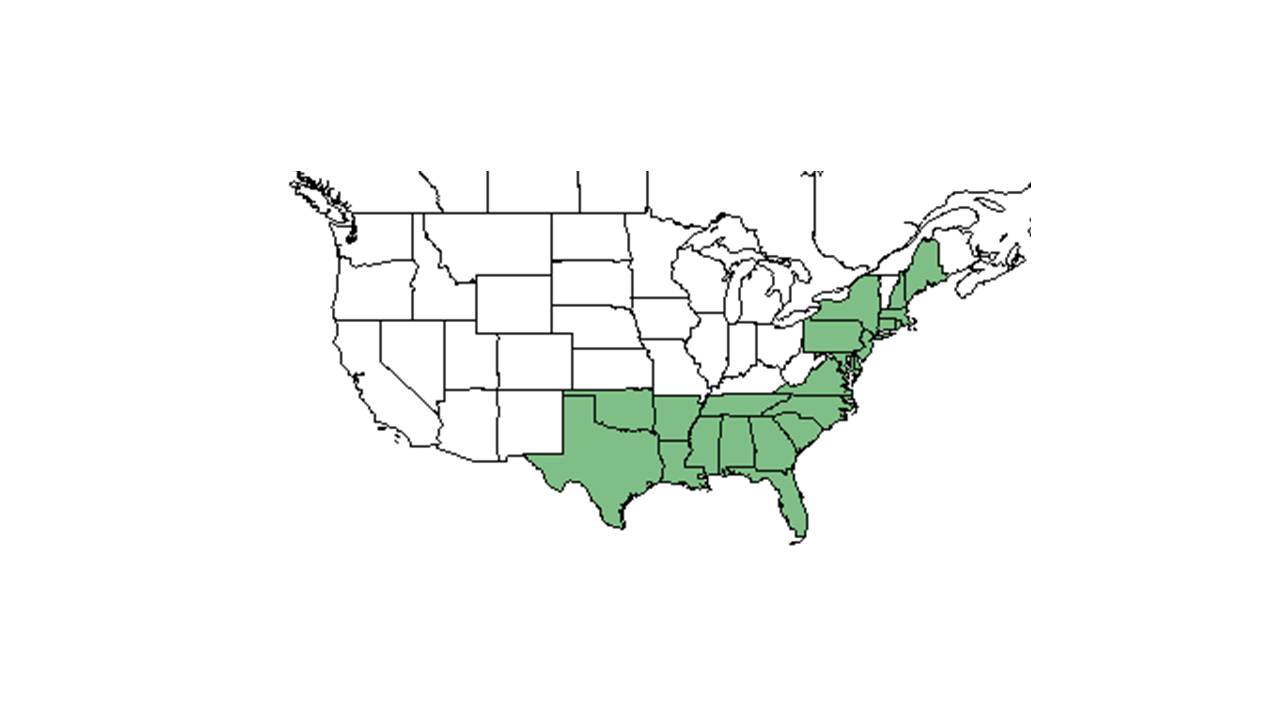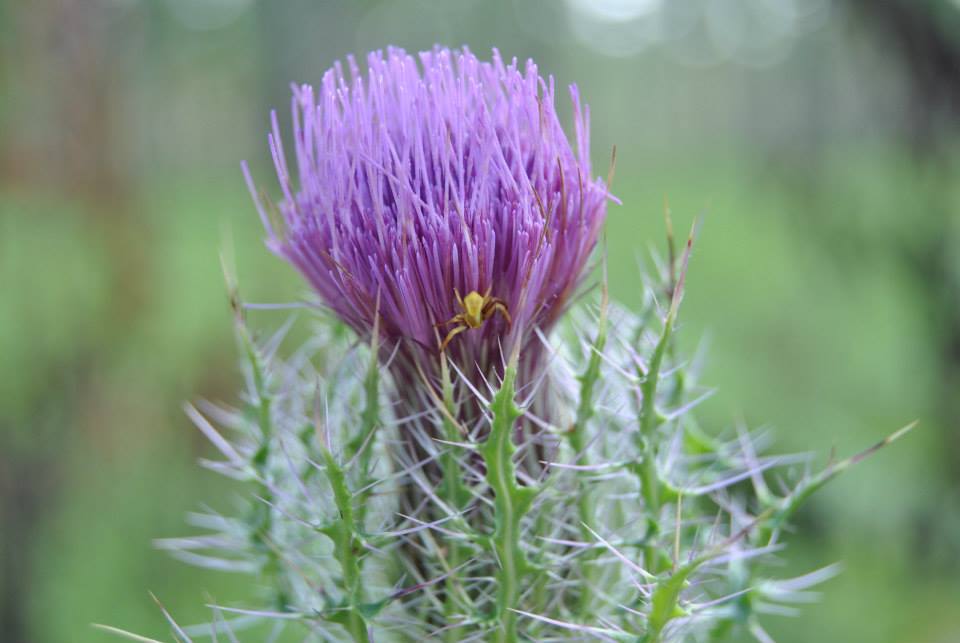Difference between revisions of "Cirsium horridulum"
KatieMccoy (talk | contribs) |
|||
| Line 29: | Line 29: | ||
===Habitat=== <!--Natural communities, human disturbed habitats, topography, hydrology, soils, light, fire regime requirements for removal of competition, etc.--> | ===Habitat=== <!--Natural communities, human disturbed habitats, topography, hydrology, soils, light, fire regime requirements for removal of competition, etc.--> | ||
It has been found in pine-wiregrass woodlands, savannahs, pine-scrub oak woodlands, juniper-pine-palm woodlands, longleaf pine-turkey oak barrens, pine hills, cabbage palm hammocks, and along streams and marshes (FSU Herbarium). This species has also been observed in human disturbed habitats such as roadsides, weedy fields, waste grounds, ligand fields, flat spoil areas, shallow watered ditches, pine plantations, and frequently mowed areas (FSU Herbarium). Takes to the moister soil below longleaf pine-scrub oak forested sand hills and occurs in open light conditions in loamy sand or peat, loose sand, and drying loamy sand (FSU Herbarium). Usually inhabits moist open areas between either drier or wetter conditions and may be present in well-drained uplands and limestone substrate (FSU Herbarium). | It has been found in pine-wiregrass woodlands, savannahs, pine-scrub oak woodlands, juniper-pine-palm woodlands, longleaf pine-turkey oak barrens, pine hills, cabbage palm hammocks, and along streams and marshes (FSU Herbarium). This species has also been observed in human disturbed habitats such as roadsides, weedy fields, waste grounds, ligand fields, flat spoil areas, shallow watered ditches, pine plantations, and frequently mowed areas (FSU Herbarium). Takes to the moister soil below longleaf pine-scrub oak forested sand hills and occurs in open light conditions in loamy sand or peat, loose sand, and drying loamy sand (FSU Herbarium). Usually inhabits moist open areas between either drier or wetter conditions and may be present in well-drained uplands and limestone substrate (FSU Herbarium). | ||
| + | |||
| + | Associated species include ''Pinus palustris, Quercus laevis, Melanthera, Eleocharis, Juncus, Xyris'', and others (FSU Herbarium). | ||
===Phenology=== <!--Timing off flowering, fruiting, seed dispersal, and environmental triggers. Cite PanFlora website if appropriate: http://www.gilnelson.com/PanFlora/ --> | ===Phenology=== <!--Timing off flowering, fruiting, seed dispersal, and environmental triggers. Cite PanFlora website if appropriate: http://www.gilnelson.com/PanFlora/ --> | ||
Revision as of 16:14, 20 October 2015
| Cirsium horridulum | |
|---|---|
Error creating thumbnail: Unable to save thumbnail to destination
| |
| photo by Gil Nelson | |
| Scientific classification | |
| Kingdom: | Plantae |
| Division: | Magnoliophyta - Flowering plants |
| Class: | Magnoliopsida – Dicotyledons |
| Order: | Asterales |
| Family: | Asteraceae ⁄ Compositae |
| Genus: | Cirsium |
| Species: | C. horridulum |
| Binomial name | |
| Cirsium horridulum Michx. | |

| |
| Natural range of Cirsium horridulum from USDA NRCS Plants Database. | |
Common name: yellow thistle
Contents
Taxonomic notes
Description
A description of Cirsium horridulum is provided in The Flora of North America. This species is thistle-like and tends to resprout growing erect to about 1 meter (FSU Herbarium).
Distribution
Ecology
Habitat
It has been found in pine-wiregrass woodlands, savannahs, pine-scrub oak woodlands, juniper-pine-palm woodlands, longleaf pine-turkey oak barrens, pine hills, cabbage palm hammocks, and along streams and marshes (FSU Herbarium). This species has also been observed in human disturbed habitats such as roadsides, weedy fields, waste grounds, ligand fields, flat spoil areas, shallow watered ditches, pine plantations, and frequently mowed areas (FSU Herbarium). Takes to the moister soil below longleaf pine-scrub oak forested sand hills and occurs in open light conditions in loamy sand or peat, loose sand, and drying loamy sand (FSU Herbarium). Usually inhabits moist open areas between either drier or wetter conditions and may be present in well-drained uplands and limestone substrate (FSU Herbarium).
Associated species include Pinus palustris, Quercus laevis, Melanthera, Eleocharis, Juncus, Xyris, and others (FSU Herbarium).
Phenology
This species has been observed flowering from March to October and fruiting from March through November (FSU Herbarium).
Seed dispersal
Seed bank and germination
Fire ecology
This species is able to grow in burned old fields (FSU Herbarium).
Pollination
The following Hymenoptera families and species were observed visiting flowers of Cirsium horridulum at Archbold Biological Station (Deyrup 2015):
Apidae: Apis mellifera
Halictidae: Augochlorella gratiosa, Halictus poeyi, Lasioglossum nymphalis, L. pectoralis
Megachilidae: Lithurgus gibbosus, Megachile brevis pseudobrevis
Use by animals
Diseases and parasites
Conservation and Management
Cultivation and restoration
Photo Gallery
References and notes
Deyrup, M.A. and N.D. 2015. Database of observations of Hymenoptera visitations to flowers of plants on Archbold Biological Station, Florida, USA.
Florida State University Robert K. Godfrey Herbarium database. URL: http://herbarium.bio.fsu.edu. Last accessed: June 2014. Collectors: L. C. Anderson, G. R. Cooley, J. R. Eaton, R. K. Godfrey, E. Keppner, L. Keppner, R. Kral, H. Kurz, K. MacClendon, K. M. Meyer, K. Patel, P. L. Redfearn Jr., W. R. Stimson, A. Townesmith, L. B. Trott, K. L. Tyson, and C. E. Wood Jr. States and Counties: Florida: Bay, Calhoun, Dade, Dixie, Escambia, Franklin, Gadsden, Jackson, Jefferson, Leon, Levy, Liberty, Marion, Monroe, Pasco, Polk, Taylor, Wakulla, and Washington. Georgia: Grady and Thomas.
